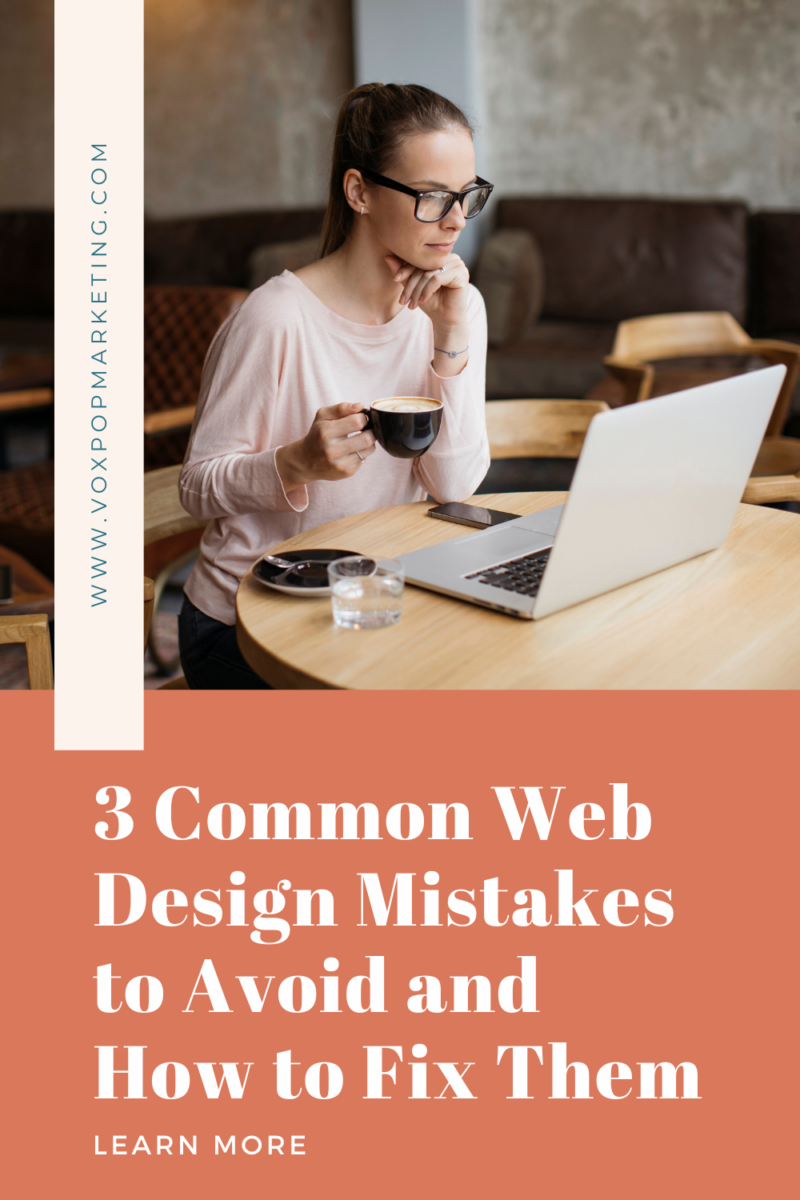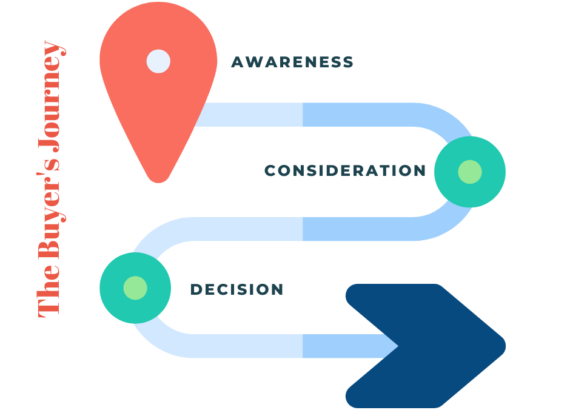 Do you continuously rework your website because you’re concerned that it’s not professional enough? Do you wonder if there’s anything you can do to make it a better lead generator?
Do you continuously rework your website because you’re concerned that it’s not professional enough? Do you wonder if there’s anything you can do to make it a better lead generator?
Read on to learn the three most common web design mistakes entrepreneurs make that turn off potential buyers and how to fix them.
Be advised, before you adjust your website, it’s important that you have a comprehensive marketing strategy. If you do your web design first, it will be a shot in the dark whether or not you get results from it.
First, get clear about your target audience and what they need from you. Then employ the strategy on your website.
That way, when they land on your website, you will stand out as the ideal solution. Your website will go from just a fancy brochure to an actual lead generator for your business.
3 Common Web Design Mistakes and How to Fix Them
Making it All About You
The first most common web design mistake is making the wording all about you rather than your readers. When people land on your website they want to know what’s in it for them to stick around, and you need to make it abundantly clear so that they do!
The easiest thing you can do is to strike all of the “I” focused wording from your web copy. Instead, use language about them. There should be a lot of “you” wording on your pages.
For example: Do you struggle with [x]? Do you want [x] outcome?
The wording on your website should address your readers’ challenges, share your solution, and make it clear why it’s the best solution to deliver the desired outcome.
Too Much Wording
Other common web design mistakes are cramming pages full of text and not making them scannable. This makes it difficult for your readers to quickly understand what’s in it for them because people don’t read websites – they scan.
If you can make your web pages scannable, you’ll be more likely to get people interested in what you’re offering and guide them further into your sales funnel.
You can make your website more scannable by pairing down the wording and by using design techniques. You don’t have to put everything out on the table with your website. Instead, think about your marketing a lot like dating …

Imagine you’re on a date coffee date with someone you’ve just met and they ask you the high-pressure question, “So tell me about you”…
This is a big open-ended question, which is probably how a lot of us feel when we write web copy for our website. We have so much to say! What should be on the page?
Well, the quick answer is to give the highlight reel. You wouldn’t tell your entire life story during your first-meeting coffee date. Instead, you would share just enough to paint a picture of who you are and pique their interest to want to know more. That’s the job of your website.
After pairing down the wording, it’s time to use design techniques that create bite-sized bits of information that people can easily digest.
Design techniques to make your web pages scannable:
- Rows to break up sections of the text
- Columns within rows to itemize benefits or features
- Headlines to draw attention
- Sub-headlines to give more context to headlines
- Bullet point lists
- Bolded wording
- Images and/or graphics to break up text
Lacking Lead Gen Pathways
 Finally, the third web design mistake is not providing multiple pathways into your sales funnel. People will visit your website at different stages along the buyer’s journey. Now the buyer’s journey is the process that someone goes through in order to arrive at the decision to work with you.
Finally, the third web design mistake is not providing multiple pathways into your sales funnel. People will visit your website at different stages along the buyer’s journey. Now the buyer’s journey is the process that someone goes through in order to arrive at the decision to work with you.
The first stage of the buyer’s journey is awareness. This is when someone realizes they have a challenge and they are looking for answers. On your website, blog posts will cater to people in the awareness stage.
The second stage of the buyer’s journey is consideration. In this stage, they are evaluating possible solutions to their challenge. Will they hire someone? And, who are the best likely candidates? To cater to people in this stage, be sure that you have one or more free downloads like guides, handouts, or even webinars on your website. In order to access this information, people will need to subscribe to your email list. This is them taking the first step into your sales funnel!
Lastly, the third stage of the buyer’s journey is decision-making. These people have already been on your email list, so they’re becoming more familiar with you. Now they’re at a point where they’re looking to make a decision one way or another. Should they work with you or should they not? Be sure to have buttons and links on your website that invite people to have a conversation with you. Examples are, “Book a Call” buttons, project inquiry or “get a quote” forms.
If you are an online service provider like a coach, consultant, or freelance service provider, I recommend having a “Book of Call” button rather than “Get a Quote”, which is more suited to business-to-consumer services.
To Wrap It Up
Did you see any of these common web design mistakes on your website? Not to worry. Simply follow the steps above to see an improvement.
And, if you want help to improve your messaging and craft that just-right web presence that attracts leads and customers, then I invite you to book a complimentary call with me. We’ll discuss your current marketing, pinpoint how you can strengthen your approach, and explore how you can use these strategies for your unique business.
